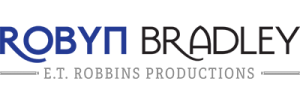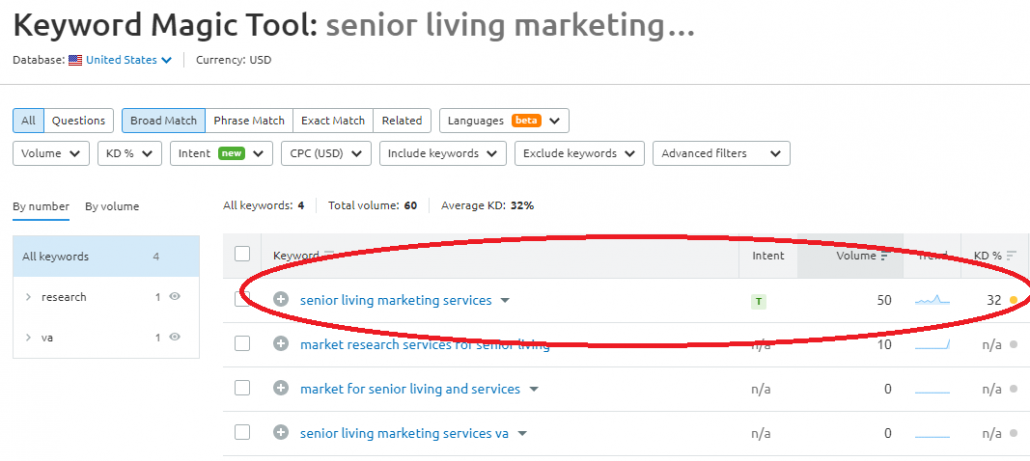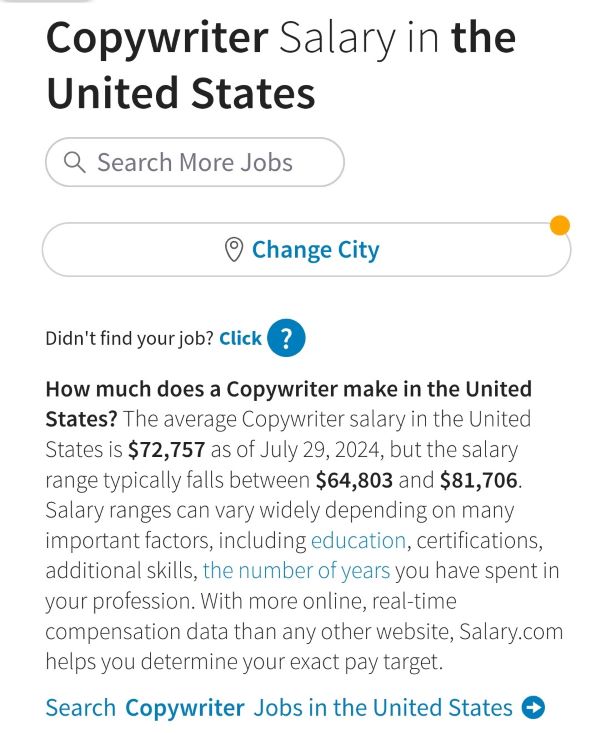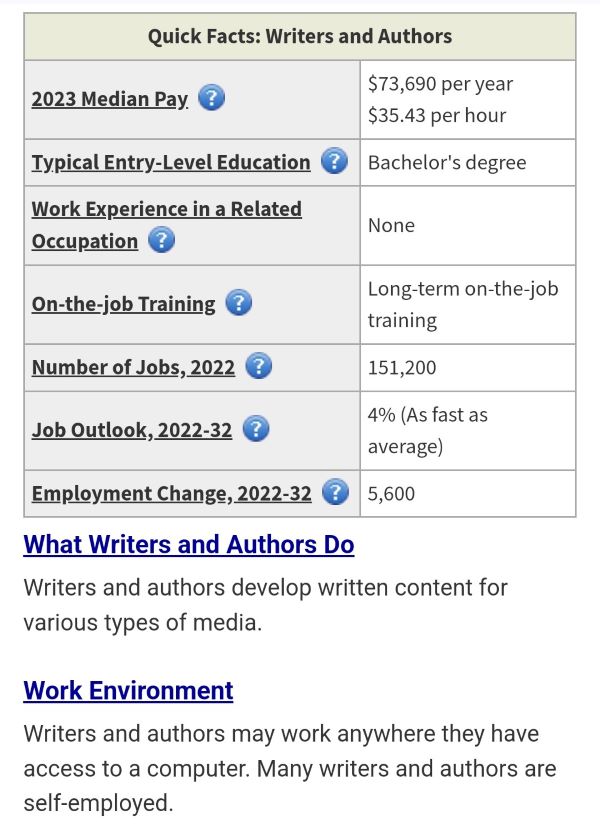Where Do Copywriters Work? Understanding Copywriting Jobs
I’m going to answer the question “Where do copywriters work?” in a moment, but if you’re reading this, please indulge me. (If you simply want the answer to the question, no hard feelings; click here to jump to the start of the answer.)
It’s the last day of August 2024 as I update this blog post, and I just “celebrated” my 22nd year as a freelance copywriter.
I put “celebrated” in quotes because I’m torn about this milestone.
Let me just say I DO know how fortunate I am that I’ve been able to make a go at this copywriting thing for over two decades. I know there are many aspiring copywriters and content writers out there who WANT exactly what I have.
And yet.
Here’s my reality.
- I never planned on being a copywriter.
- I certainly never thought I’d be a copywriter for this long.
- I’d like to tell you I feel successful. I don’t.
- But that likely has something to do with my definition of success.
- I’ve yet to crack the six-figure mark. I bring this up because this figure gets bandied about A LOT in copywriting circles. Here’s the thing: Even if I did hit that number, I still wouldn’t feel successful. Again, due to my definition of success, which doesn’t have anything to do with being a copywriter or how much money I make.
- That said, I make decent enough money as a freelance copywriter to support my needs. (I hope this is helpful for some newer freelance copywriters. You don’t necessarily need to make six figures to make a go of this.)
- Every day, I tell myself, “Be happy with what you have.”
- Some days, I can fake it better than others. Some days, I might even be inching towards contentment.
- I realize this post sounds depressing. But it’s also liberating for me to write.
- I can honestly say I have lovely clients and colleagues, and 98% of the clients I’ve worked with over the years have been great. I can think of only one truly toxic copywriting client, and it was incredibly short-lived (one of the benefits of freelancing).
- So, to any current or former clients and colleagues reading this, thank you. And please know it’s me and not you when it comes to any discontent I feel about my profession.
- I still look up work-related acronyms. Like, all the time. The other day, it was VOC. (I guessed “voice of the customer” before I looked it up, but I wanted to confirm I guessed correctly.) Same with VSL. (Video sales letter.)
- Ten years ago—heck, even five—I probably wouldn’t have admitted that out loud.
- It’s OK to admit you don’t know things.
- It’s OK to admit that a job, even a copywriting job that’s treated you well over 22 years, doesn’t make your heart sing.
- And maybe it’s even OK that you don’t have a job that makes your heart sing.
- My big, hairy, scary dream has always been to make a living writing fiction full time.
- I feel much farther away from that dream today than I did in 2002.
- I worked toward that dream diligently for 20 years, work that included self-publishing a couple of novels, going back to school for my MFA in Creative Writing, and landing an agent for my third novel. But none of the publishers jumped, and the agent and I have since parted ways (amicably). My favorite rejection came from an editor at a publishing house who said, “It kind of breaks my heart to say it, but I cannot make an offer. The writing was great, the psychology was fascinating, and the suspense pretty well done, but ultimately I felt that I didn’t know how to sell a book about a woman who kills children.” (It’s a serial killer novel, folks. I don’t kill kids as a side hustle.)
- I recently read an article about late bloomers—Paul Cézanne, Julia Child, and Morgan Freeman—which was helpful at the time.
- Another thing that I find helpful is videos, articles, and books about near-death experiences and shared-death experiences. Those things are my comfort food. Weird? Maybe. But NDEs and SDEs give me BIG hope, which is in short supply these days.
- I’m not sure how to wrap up this list. I can appreciate positivity, and despite current appearances, I can even practice it successfully for stretches. I do find inspiration in quotes like, “It’s never too late to live the life you always imagined.” But turning inspo into reality doesn’t always work out, try as we might, and career-making isn’t always pretty. I realize this post probably isn’t what most people want to hear. But it’s all true. And perhaps in our everything-looks-perfect-for-everyone-else-but-me world of social media, it might help some folks to hear from someone 22 years into her freelance copywriting career talk about it this unvarnished way.
Now, then. I feel a little better. 🙂
Here’s the thing: Everything I just shared ties into the answer to the question: Where do copywriters work?
Because there’s not just one place. There are many places where copywriters (or content writers) might work. And there are plenty of gigs where you might be doing copywriting, even if it’s not in your job description or you don’t have the title of “copywriter.” (And let’s not forget other common titles, like content marketer, marketing writer, and just freelance writer.)
Here’s the other thing: Many people (including me) use the titles copywriter and content writer interchangeably. Purists will tell you copywriting is all about conversions. You write the words that sell stuff. All of that’s true. But purists will also tell you that content writing is all about engaging, not selling.
My take . . .
- All writing has to engage people on some level. The words need to be noticed, to be read (or heard). This is true whether someone is reading a billboard or a 1,000-word blog post.
- Content writing is about selling, too (ultimately anyway). Businesses don’t hire content writers simply to entertain and engage people. The businesses have an ulterior motive: to draw folks in and create brand awareness with the hope (or goal) that the person might become a paying customer at some point.
When I write a 3000-word educational blog post, I know my goal is to inform, not ask someone to buy on the spot. When I write a sales-oriented email sequence, I know my copy has to be hard-hitting.
Good writers know how and when to use what skills depending on the goals. The good news is that these are learnable skills, too.
Still with me? Good.
Back to the question at hand . . .
Where do copywriters work?
One place that copywriters work (or freelance) for is marketing agencies.
Marketing agencies produce a lot of content for their clients, and someone needs to write that stuff, right? Think blog posts, websites, guides, social media posts, print/radio advertising, content strategies, branding and messaging. (That’s a short list.)
Marketing firms often have full-time writers on staff, with titles like senior copywriter and junior copywriter. However, some of these places also outsource to freelance copywriters like myself because the firm has so much work coming in that its employees can’t manage it all. The agency will turn to a reliable “stable,” as we say, of freelancers. (And this is true for many jobs, including freelance graphic designers, SEOs, web developers, etc.)
Marketing agencies also use interns. So, if you’re looking to break into copywriting or for an entry-level job as a copywriter, going for a copywriting internship is a smart idea. (Jump down to the section about how to ace a copywriting internship interview.)
Where do copywriters work?
Copywriters work “in-house” within businesses.
The larger the business, the more likely it will have at least one writer on staff (again, they might use the terms copywriter, content writer, content marketer, or marketing writer). In fact, really big brands will often have a full-time team of writers in-house, usually as part of their marketing or creative departments.
Why? Again, think of all the content that a business needs. Content is what makes the business world go round. You need blog posts, you need social media posts, you need web pages, you need mailers, you need TV commercials. You need marketing and sales collateral, like a brochure, an instruction manual, or a sell sheet.
And someone needs to churn out that content—someone with a deep understanding of the company, its target audience, and its marketing objectives.
(I’m using the word “business” loosely here. Nonprofits and academic institutions need content for their website, social channels, marketing collateral, etc. Some might have a writer or two on staff. Others might outsource directly to a freelancer or through a marketing firm.)
Sometimes copywriters freelance for in-house teams.
The business might have a content team, but it has too much work for its team to do, and yet it doesn’t have enough work (or the budget) to justify hiring another person. Freelancers fill in the gap. I worked with a company for six years with this exact set-up: It had a couple of content people on staff, but then it would outsource monthly work to me. They (and other clients of mine) refer to this as copywriting support.
When copywriters discuss where they work, some might mention working for an agency, in-house, or freelancing.
When you work for an agency, you’re often on several different client accounts and often from different industries. Agency copywriters need to be nimble. You might be writing about robotics in the morning and prostate cancer in the afternoon.
In-house copywriters who work for a business are doing content on behalf of that business. So the writer usually gets to work deeply in that one area, that one industry.
I’ve known plenty of agency copywriters who’ve burned out on agency life because they suffered from creative whiplash: constantly juggling different brand voices, industries, and needs. Then again, some writers thrive working for agencies because of the diversity in clients and content. And I know writers who are happy to work in-house for a team.
There’s no right or wrong answer here. Only what’s right for you. And what’s right could change over time.
Where do copywriters work?
Copywriters also work at ad agencies.
Ad agencies need writers. Think about it. They need words for all those ads, whether we’re talking TV commercials, radio spots, print ads, digital ads, and so forth.
Picture Peggy in Mad Men. She was the ultimate copywriter and, eventually, copy chief.
Where else do copywriters work?
Copywriters work in the entertainment/publishing industry.
Newspapers, magazines, publishing houses, media conglomerates, and streaming companies—many will have copywriters on staff as part of the marketing and/or advertising departments.
Copywriters work for content mills. (Sigh.)
Basically, any business that’s serious about its marketing will produce content, and it needs someone to write it. Sometimes, businesses turn to content mills, which I don’t typically recommend for writers. (Check out my video for further details.) My biggest beef with content mills is that they don’t pay writers enough.
What are a copywriter’s job responsibilities?
The main responsibility is writing error-free copy that engages and converts (depending on the goal).
But in reality, copywriters can have plenty of other responsibilities:
- Having input on the overall content strategy
- Coming up with ideas, managing campaigns
- Doing keyword research
- Performing content audits
- Having a basic understanding of analytics
- Creating and maintaining editorial calendars
- Conducting interviews
- Researching, researching, and more researching
- Writing various types of content, like long-form blog posts, short and snappy social media posts, email sequences, white papers, advertisements (and this isn’t an exhaustive list)
Many copywriters bring other skillsets to the table:
- Design skills (Canva, PhotoShop)
- WordPress skills
- HubSpot skills
- Video skills
Responsibilities will vary job-to-job, but you’ll typically see a combination of the ones above on most job descriptions. (Browse job descriptions on LinkedIn, Glassdoor, and Indeed for more insight.)
The resposibilities will also vary between senior copywriters and junior copywriters. Senior copywriters might have more managerial tasks, for example.
And if you’re a freelancer, you’re often expected to be able to do all of the above while also juggling business reponsibilities, like paying taxes.
Is it possible to find copywriting jobs with no experience?
Possible? Perhaps. Likely? Nope.
But you might say, “But I know how to write!”
OK, sure. But think about it this way. You might know how to cook. Does that mean you could walk into a restaurant and become a head chef without any experience being a chef? Again, unlikely.
But here’s the good news: Copywriting is a very learnable skill. So if you have writing chops, if you love writing, AND you’re willing to take a step back and learn, you can make a go of this.
How can I learn about copywriting?
So many ways!
First of all, think more broadly than simply “copywriting.” One of the best things you can do is dive into all aspects of digital marketing (which encompasses copywriting, content writing, and content marketing).
Take my FREE self-directed copywriting course. Click through to the YouTube description for links to all the classes and assets. I designed it to mimic a semester-long intro course.
Here are my go-to resources for learning the ins and outs.
I use Amazon Affiliate links. If you use one of the links to buy something, it won’t cost you more, but I’ll earn a small commission. I only recommend stuff that I believe in. I own both of these books.
- The Copywriter’s Handbook by Robert W. Bly (Amazon affiliate link)
- Using Behavioral Science in Marketing: Drive Customer Action and Loyalty by Prompting Instinctive Responses by Nancy Harhut (Amazon affiliate link)
So if I simply teach myself, I’ll be able to land a copywriting job?
It depends. Most job descriptions will call out how much experience they’re looking for in applicants. Very few will say “no experience.” Some might say 1 to 3 years. Those are the ones to focus on after you’ve spent time teaching yourself and doing some side hustle (even if it’s little to no pay).
If your goal is to be an employed copywriter, your job right now is to teach yourself as much as possible and to do copywriting work you feel proud of that you can add to a portfolio. I don’t recommend people work for free (at least, not for long), but if you’re aiming to landing a paying job, you might want to focus on quality rather than income as you’re building your skills and writing chops. In this case, I’d assume you’re probably working another job or you’re in a situation where you don’t need to work and you can focus on doing copywriting projects pro bono to get experience.
Keep in mind you can back into copywriting and content writing by being open to different job titles (aka, think “digital marketer,” “marketing coordinator,” and similar titles).
Many businesses will be thrilled if you’re more than a one-trick pony. Be willing to do things other than write. Get good at designing things in Canva, for example. Learn how to build pages in WordPress. Learn the ins and outs of HubSpot. Embrace AI. (I’m seeing more and more job descriptions talk about using AI.)
So if there’s an entry level digital marketing coordinator position, you might consider going for that and highlighting your writing abilities. Trust me, businesses will LOVE you for it. You can always transition to a content team or copywriting job later.
You can also gain valuable experience, make connections, and possibly land future work through a copywriting internship.
An aspiring copywriter recently left the following comment on one of my YouTube videos:

Here’s my response (lightly edited for length):
I’ve freelanced with one marketing agency for 18 years and another for over ten, so I have a lot to say. 🙂
Marketing agencies usually have tons of accounts, so they need people who are adept at juggling multiple clients and switching seamlessly between them. It’s easy to think being a kickass writer is the main job requirement, but two other components are equally important: meeting deadlines and being pleasant to work with.
I call this being a triple crown copywriter: be good at what you do, be pleasant to work with, and always meet deadlines.
How can you translate this into your conversation with the agency? Talk about how you’re like a dog with a bone when it comes to deadlines and you never miss them (provided that’s true—and if it’s not, work on it). If you have a story with a previous employer that demonstrates this point, even better.
Talk about your approach for managing multiple tasks. Lots of agencies are virtual, and it’s important that people on the team are comfortable working in these environments. You need to show how you can work well independently, but also play nice on account teams.
On the copywriting front, talk about how you keep up with what’s current in copywriting and marketing land. What blogs do you read? What newsletters do you subscribe to? Who do you follow on LinkedIn? What books have you read (doesn’t need to be copywriting-specific . . . think about business-related books).
You could ask the agency their definition of copywriting. When they say copywriting, do they mean sales-focused content, like sales emails, sales letters, and ads? Or do they take a broader view of copywriting (like I do) and think of it as all marketing writing: blog posts, white papers, guides, emails, website pages, ads, social media posts, etc.
Marketing agencies also love it when people have related skills. Do you have experience doing keyword research? Do you know Photoshop or Canva? (And have examples to back it up?) Do you know HTML? WordPress? ChatGPT, Claude, Gemini, etc. Do you have any certifications from HubSpot?
You get the idea. Think of all the related skills you have and talk them up.
Does the marketing agency focus on certain industries? If yes, do you have any experience in these industries? If you have direct experience, talk about it. If you don’t have direct industry experience, discuss how you’d get up to speed on a client account.
And finally, talk about your journey into copywriting. You mentioned you have experience with copywriting even though you’ve never held the title of “copywriter.” Talk about this evolution, and discuss how you taught yourself the skills. (It’s OK to be self-taught. I am!)
Were you always interested in writing and when the situation presented itself, you jumped? Talk about that. Talk about your approach to writing copy and all that good stuff. Show them how you think and that you DO think deeply about these things.
If they ask if you have any questions . . . you could say something like, “Of the interns you’ve had in the past . . . the really great ones . . . what was it about them that made them successful in their role? And are there any specific certifications from HubSpot Academy that you would recommend I take?”
Since this is an internship, they likely don’t expect you to have experience in everything. Show your enthusiasm and willingness to learn. Demonstrating continual curiosity is always a good thing as well (for any job, but especially writing gigs).
What if I want to become a freelance copywriter?
If you’re trying to build a freelance copywriting business, the approach is similar: You need to learn the ins and outs of copywriting, digital marketing, and the like FIRST.
Again, this won’t happen overnight. Before you embark, you should have money set aside to get you through the build-up stage (or an arrangement, like living with parents or having a partner who carries the bills) for anywhere from six months to a year.
I wrote a juicy in-depth post on how to start a freelance copywriting business.
Got any more questions about where copywriters work? Just ask.
As for me, I mostly freelance for marketing agencies and directly with clients. Some of my clients are larger companies, while others are small businesses (sometimes consisting of a single person). It runs the gamut.
Wishing you much luck on your journey! 🙂





